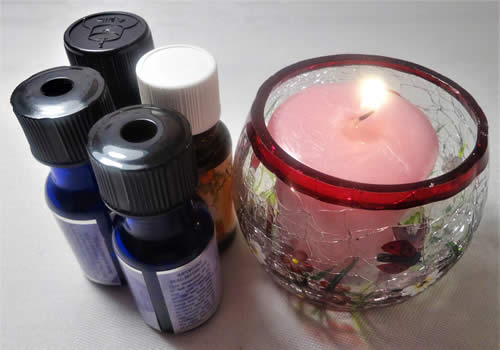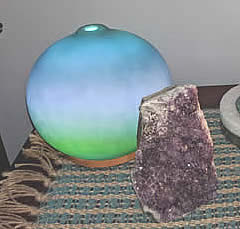 As professionals in long term care, our job has become increasingly complex. We no longer deal with just the elderly, but with a myriad of disabilities and special needs. We see residents with psychiatric issues, multiple and complex diseases, younger residents, and an increasing amount of behavioral issues due to cognitive deficits. As professionals in long term care, our job has become increasingly complex. We no longer deal with just the elderly, but with a myriad of disabilities and special needs. We see residents with psychiatric issues, multiple and complex diseases, younger residents, and an increasing amount of behavioral issues due to cognitive deficits.
The game is changing. With the rise of home health and community resources, people are often older and/or sicker by the time they require the assistance of a long term care facility. We are forced to re-evaluate our practice, and constantly learn and implement new interventions. With the aging of Baby Boomers on the horizon, we will need to look to new and innovative interventions that go above and beyond traditional strategies. One such avenue that is being explored in the long term care arena is the use of Aromatherapy.
Aromatherapy is the use of essential oils for healing purposes. Scientists believe that by inhaling these oils, they are absorbed directly into the amygdala and the hippocampus areas of the brain. They stimulate the brain to communicate with the body much in the same way some medications do. For example, lavender is believed to stimulate activity in the cells in the amygdala in the same way that certain sedative medications do. (University of Maryland Medical Center)
Many believe that aromatherapy is a “new age” type of alternative medication, and may be reluctant to try it. In fact, aromatherapy has been around for thousands of years, making it a more tried and true method of healing than even modern medicine. In 2005, National Geographic Magazine published an article documenting the discovery of surgical tools found next to vials of sacred oils, suggesting that essential oils were used for medicinal purposes during surgical procedures. The Bible also mentions the use of essential oils such as frankincense, myrrh, and spikenard throughout many of the books. Prior to modern medicine, soldiers used to carry pouches of myrrh, known for its antibacterial properties, into battle to disinfect and help heal their wounds. The use of essential oils has been around a very long time.
Not just any good-smelling aroma will work. Essential oils are extracted from the leaves, seeds, stems, bark, and flowers of plants known for their healing properties. The oils are harvested in the field using special processes, so the plant remains intact. Chemically duplicated aromas such as those found in perfumes, candles, air fresheners, lotions, and room sprays will not have the same physiological effects on the body because they do not have the same biological components of the plant oil. In fact, chemically duplicated aromas are more likely to cause an allergic or adverse reaction then an essential oil.
Essential oils enter the body in one of two ways. The molecules of oil mix with the air and become odorous, and then are inhaled either through the nose or the lungs. The molecules that enter your nose come into contact with over 20 million nerve endings, transmitting a signal to the brain before entering the limbic system. The molecules that enter your lungs become absorbed into the circulatory system and are eventually expelled through the urinary tract. Believe it or not, even a person with no sense of smell may still benefit from the use of essential oils, because the molecules are still able to interact with the systems of the body.
There is not much research currently available on the use of essential oils in long term care, but one successful study was done by Certified Aromatherapist Jackie Farnell at the Mattie C. Hall Home in Aiken, FL. Mattie C. Hall has a 44-bed Alzheimer’s unit, which partnered with Jackie and her company, Scentsible Solutions, on a special project for the Spirit of Caring competition sponsored by the South Carolina Department of Health and Environmental Control. In its completion, this study was awarded a statewide best practice and is now included on the Centers for Medicare and Medicaid Sharing Innovations in Quality website.
For the study, they targeted four negative resident outcomes and one staff outcome. They looked at weight loss, sun-downing behaviors, insomnia and pain, memory, and care-giver fatigue. To address the weight loss issues on the unit, Farnell created a special blend to stimulate the appetite, consisting of grapefruit and clove oils. The oil blend was diluted in water in a spray bottle, and sprayed onto the resident’s clothing protectors ten minutes prior to each meal. After one year of using this oil, the number of residents on the unit with an unanticipated weight loss of three or more pounds went from ten to two. After continuing the program for three years, Mattie C. Hall had no residents with weight loss issues on their Alzheimer’s Unit (last data was collected in 2007).
The next targeted issue was sun-downing behaviors. Sun-downing can be described as a period of heightened agitation, anxiety, and confusion commonly seen in patients with dementia during the late afternoon. Farnell’s oil blend, called Restore Peace, is a mixture of grapefruit and frankincense that has a soothing effect. Staff on the unit would administer this blend in the early afternoon to late evening by placing a few drops on a sticky-backed felt heart and affixing it to the resident’s clothing, or by using a fan diffuser for the room. Over one year, the number of residents receiving psychotropic medications (primarily Antipsychotics and Anxiolytics) at this time of the day went from nine to two. After three years, Mattie C. Hall has no residents on their Alzheimer’s unit using antipsychotic medications in the late afternoon.
Third, the facility looked at insomnia and pain. The blend that was developed was a combination of lavender and bergamot (a citrus fruit). This blend is also particularly effective as an anti-depressant. This blend was administered at bedtime and throughout the night by using a few drops on the pillowcase, or on a clay disk on the nightstand, or by using a fan diffuser. It was also used during the day for pain relief by placing a few drops on an adhesive felt heart, or by blending into massage lotion and rubbed onto the skin (Note: Unless you are trained in massage, you should not directly rub the area that is in pain).
At the end of the study, Mattie C. Hall’s Alzheimer’s residents were coming to the nursing station asking for their “heart” instead of pain medication. While they were unable to quantify the amount or quality of the resident’s sleep, they did notice a sharp decrease in the number of falls they were having at night after implementing the use of this essential oil blend.
The blend that was developed to improve memory did not have significant results in the Mattie C. Hall study, but in other studies certain essential oils have been shown to stimulate short-term memory for a period of time following the administration of the oil. The effects were not permanent.
Finally, Farnell developed an oil blend specifically for use by the caregivers. The oil was a mixture of orange, cinnamon, lemon, and ylang-ylang, and it promoted clarity and alertness among the staff. The staff found it was most effective if used between 3:00-4:00 p.m. through a fan diffuser set up at the nursing station. Second shift workers were given individual vials to take home, so they could use it on their way to work and arrive refreshed and ready to go. They found it was particularly effective if they placed a few drops on a tissue and stuck it in the air vent in their car. Data was not collected, but staff reported feeling more alert and focused during their shift.
Case studies and more information about the Scentsible Solutions program for Alzheimer’s can be found on Farnell’s website, www.scentsiblesolutions.com. She has a training video and manual available, as well as product information and information about other clinical trials.
 Some care must be exhibited when handling and using essential oils. Residents and staff should be assessed for allergies, because although extremely rare, you can have an allergic reaction to the oil if you are allergic to the plant it came from. Essential oils should always be kept out of reach of children or confused elders, and it is not recommended for pregnant women to come into contact with essential oils, as some oils are actually used to bring on labor. Only certain oils can be used directly on the skin (lavender and tea tree). All others must be blended or diluted before use, or burning and rash may occur. Some oils may be toxic, so never use an oil before exploring usage and side effects, and never ingest oils internally. There are certain medications for which essential oil use is contraindicated, such as Coumadin, so be sure to check with a physician prior to beginning an aromatherapy program with an individual. Some care must be exhibited when handling and using essential oils. Residents and staff should be assessed for allergies, because although extremely rare, you can have an allergic reaction to the oil if you are allergic to the plant it came from. Essential oils should always be kept out of reach of children or confused elders, and it is not recommended for pregnant women to come into contact with essential oils, as some oils are actually used to bring on labor. Only certain oils can be used directly on the skin (lavender and tea tree). All others must be blended or diluted before use, or burning and rash may occur. Some oils may be toxic, so never use an oil before exploring usage and side effects, and never ingest oils internally. There are certain medications for which essential oil use is contraindicated, such as Coumadin, so be sure to check with a physician prior to beginning an aromatherapy program with an individual.
Essential oils are volatile, meaning that they will evaporate into the air, so oils should always be stored upright with the caps on tightly. Oils should not be left in sunlight, as they will lose their potency. Also, certain oils like lemon and orange are photosensitive, so individuals should avoid sun exposure after use. Essential oils should only be purchased for a reputable aromatherapist. A quality oil will always come in a blue or brown glass vial and should carry the label “100% pure essential oil.”
There are many other fun and interesting ways to bring aromatherapy to your facility besides the aforementioned uses. You can use them during one to one activities to stimulate the senses and evoke memories. Many crafts can be made with essential oils such as bath salts, room mists, sachets, scented bookmarks, soap, and drawer fresheners. You can also use them in hot or cold compresses if the physician approves of their use. I recommend you spend a good amount of time educating your staff and residents before beginning to use essential oils. You can even get the residents involved by starting an Aromatherapy Club where you explore different oils and their uses.
If you’re thinking about implementing an aromatherapy program in your long term care setting, I encourage you to explore your options. Begin to read and research, and seek the advice of a certified aromatherapist if possible. Aromatherapy can be a wonderful addition to your program, with great results and little to no adverse effects.
Sensory Stimulation: Tips and Techniques Staff Inservice - 50% OFF |
 This 60-90 minute introductory inservice is designed to assist the Recreation/Activity Director, or Staff Educator in providing an overview, as well as tips and techniques of sensory stimulation as it pertains to older adults and elders. The inservice comes with a handout, teacher's outline, certificate of attendance, inservice sign in sheet, flyer, interactive exercise, and inservice evaluation form. The educator may wish to split this into 2 sessions. Participants will be able to: This 60-90 minute introductory inservice is designed to assist the Recreation/Activity Director, or Staff Educator in providing an overview, as well as tips and techniques of sensory stimulation as it pertains to older adults and elders. The inservice comes with a handout, teacher's outline, certificate of attendance, inservice sign in sheet, flyer, interactive exercise, and inservice evaluation form. The educator may wish to split this into 2 sessions. Participants will be able to:
*identify residents who would benefit from sensory stimulation.
*identify the A.P.I.E. process and how it relates to sensory stimulation.
*discuss and utilize at least one facilitation technique for each sense.
*recognize resident responses to various forms of stimuli.
*complete a theme-related sensory planning guide.
|
|







